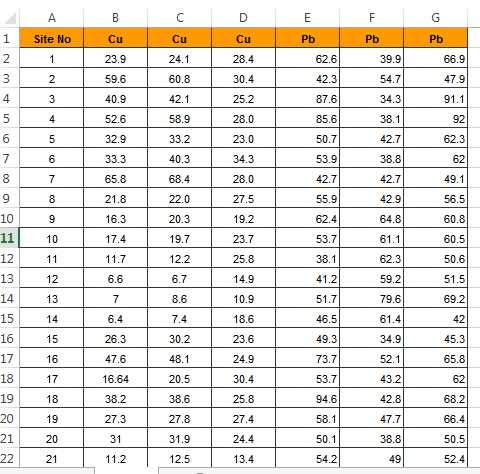Event Study and the Market Model Calculator
 Event studies find wide application in research in the fields of finance, economics and law. In finance and economics research, event studies are employed to investigate the effects of announcements of events such as changes in regulations, shocks in the macroeconomic environment, or company initiatives on stock prices or firm value. Event studies may, for example, be used to investigate the effects of board reforms, compensation, workplace safety, changes in taxation, pandemics, dividends and repurchases, equity and debt issuance, or mergers and acquisitions on stock prices. In the field of law, event studies have been used to determine damages in legal liability cases. Have you been wondering where you can find event study help, market model help, or an event study market model calculator? If so you have probably landed in the right place.
Event studies find wide application in research in the fields of finance, economics and law. In finance and economics research, event studies are employed to investigate the effects of announcements of events such as changes in regulations, shocks in the macroeconomic environment, or company initiatives on stock prices or firm value. Event studies may, for example, be used to investigate the effects of board reforms, compensation, workplace safety, changes in taxation, pandemics, dividends and repurchases, equity and debt issuance, or mergers and acquisitions on stock prices. In the field of law, event studies have been used to determine damages in legal liability cases. Have you been wondering where you can find event study help, market model help, or an event study market model calculator? If so you have probably landed in the right place.
Event studies in the field of finance and economics often involve calculating statistics such as stock returns, market returns, expected returns, Cumulative Abnormal Returns (CARs), Averaged Cumulative Abnormal Return (ACAR), Average Abnormal Returns (AAR) (alternatively called averaged abnormal returns), and Cumulative Average Abnormal Return (CAAR). Calculating these characteristics can be made easier and faster with the help of an event study market model calculator.
In event study theory, the market model among other models are applied towards determining the expected return based on the efficient market hypothesis. The other models that are commonly used to determine the expected return include the mean adjusted return model, the market adjusted returns model, the market model with Scholes-Williams beta estimation, the market model with GARCH(1, 1) and EGARCH(1, 1) error estimation, the Fama-French 3 Factor Model, and the Fama-French-Momentum 4 Factor Model. The market model, which apparently is the most commonly used model, is sometimes referred to as the Risk-Adjusted Returns Model (since it takes into account market risk), the Ordinary Least Squares (OLS) market model (Fama et al., 1969), the classic market model, the usual market model, or the basic market model.
The market model suggests that the return on stock i at time t is solely influenced by the market return at time t. When using the market model, expected returns are predicted through an OLS regression analysis that regresses stock returns on market returns (usually returns on a market index) over a predetermined estimation window. The relationship between the stock and the reference or benchmark index that has been used in the analysis is described by two parameters derived from the regression analysis: alpha (α) and beta (β). Alpha and beta are computed using data relating to the estimation period.
The expected return, E(Rit|Xt), is predicted using the model:
𝑬(𝑹𝒊𝒕|𝑿𝒕 ) = 𝜶𝒊 + 𝜷𝒊(𝑹𝒎𝒕) +𝜺𝒊𝒕
Where α and β are constants in the OLS regression model for i stock,
Rmt is the rate of return on the reference index (such as the FTSE 100, FTSE 250, FTSE All-Share, NYSE Composite (DJ), NYSE U.S. 100) on day t,
εit is the error term.
Calculate Expected returns, Abnormal returns, Cumulative Abnormal Returns Easily and Other Event Study Statistics
When performing an event study that applies the market model, you will most likely need to compute stock returns or securities returns, expected returns (ERs), abnormal returns (ARs), Cumulative Abnormal Returns (CARs), Averaged Cumulative Abnormal Return (ACAR), Average Abnormal Returns (AAR) (alternatively called averaged abnormal returns), and Cumulative Average Abnormal Return (CAAR). Additionally, you will likely need to determine descriptive statistics such as means, standard deviations, medians, modes, minimums, and maximums for different characteristics (such as abnormal returns and cumulative abnormal returns). Computing these statistics can be boring, tedious, time consuming, and confusing especially when several firms/securities and long time periods are involved. However, an event study market model calculator makes computing these statistics easy, fast, and accurate. You can thus rely on an an event study market model calculator to compute expected returns, abnormal returns, cumulative abnormal returns and other event study statistics easily, fast, and reliably.
The event study market model calculator or simply, the market model calculator, is a Microsoft excel file that performs several functions and can thus provide invaluable event study help, market model help, and expected return help. It is designed to be a:
- Market model calculator
- Event study calculator
- Stock returns calculator
- Benchmark market returns calculator
- Market model alpha and beta calculator
- Expected returns calculator
- Abnormal returns calculator
- Cumulative abnormal returns calculator
- Averaged cumulative abnormal returns calculator
- Average abnormal returns calculator (Averaged abnormal returns calculator)
- Cumulative average abnormal return calculator
The event study market model calculator can be used to compute the different statistics for a maximum of 100 companies/securities/stocks over several time periods (days/weeks/months) around the announcement. The calculator relies on the OLS market model to determine expected returns and abnormal returns. Specifically, it computes the following statistics:
- Stock returns
- Benchmark/reference/market returns
- alpha and beta coefficients
- Expected returns
- Abnormal returns
- Cumulative abnormal returns
- Averaged cumulative abnormal returns
- Average abnormal returns
- Cumulative average abnormal return
- Descriptive statistics such as standard deviations, medians, modes, minimums, maximums, and percentage of positive abnormal returns.
For which Event Period-Estimation Window Combinations Can the Calculator be Used?
The event study market model calculator has been designed for use in studies with different combinations of event windows and estimation periods. It can be used for studies that have a maximum estimation period of 25 (from T-6 to T-30) and a maximum events window of 31 periods [T-15, T+15]. The market model calculator will probably save you a lot of time and effort. The table below presents the specific combination of event periods and estimation periods for which the event study market model calculator can be used.
|
Event Period |
Estimation Period |
Estimation Window |
|
11 [-5,+5] |
25 |
T-6 to T-30 |
|
11 [-5,+5] |
20 |
T-6 to T-25 |
|
11 [-5,+5] |
15 |
T-6 to T-20 |
|
11 [-5,+5] |
10 |
T-6 to T-15 |
|
11 [-5,+5] |
5 |
T-6 to T-10 |
|
21 [-10,+10] |
20 |
T-11 to T-30 |
|
21 [-10,+10] |
15 |
T-11 to T-25 |
|
21 [-10,+10] |
10 |
T-11 to T-20 |
|
21 [-10,+10] |
5 |
T-11 to T-15 |
|
31 [-15, +15] |
15 |
T-16 to T-30 |
|
31 [-15, +15] |
10 |
T-16 to T-25 |
|
31 [-15, +15] |
5 |
T-16 to T-20 |
The event study market model calculator is by design easy to use. To use the calculator, you need the stock prices for the company/stock or companies/stocks on different dates that cover your event period and estimation period. For each stock price, you also need to provide a relevant benchmark or reference index.
Limitations of the event study market model calculator
The calculator can only be used for studies based on the classic or OLS market model and does not apply for models such as market adjusted returns model, CAPM, Fama-French 3 Factor Model etc.
- The calculator can be used to for only one event at a time (not multiple events at a time)
- The calculator can only calculate cumulative abnormal returns, averaged cumulative abnormal returns, and cumulative averaged abnormal returns for symmetric event periods (such as [-1, +1], [-2, +2], [-3, +3], … [-15, +15]).
- The calculator does not perform inferential tests such as t-tests
- The calculator is designed for short horizon event studies: The maximum estimation period that the calculator can handle is 25 periods (days, weeks, months) (that is from T-6 to T-30). The maximum event period that the calculator can handle is 31 days (that is from T-15 to T+15).


 1. What are the shared resources and capabilities shared by the separate Virgin companies? – common resources and capabilities Virgin companies.
1. What are the shared resources and capabilities shared by the separate Virgin companies? – common resources and capabilities Virgin companies. A key element that motivates migration to foreign countries is the prospect of remitting (Carling, 2008). Today, migrant remittances are recognised as an important source of foreign capital for several nations (Meyer & Shera, 2017). Migrant remittances are particularly important for developing countries if remittance statistics from the World Bank and the International Monetary Fund (IMF) are anything to go by. Remittances are the sum of migrant transfers in the form of cash of goods from the foreign country in which they live or work to their country of origin to support their families (Ratha, 2013). According to the IMF, while estimating the exact amount of remittance flows is not easy as many transfers are done through unofficial channels, globally, migrant remittances was in excess of $483 billion in 2011 (Ratha, 2013). Out of this amount, $351 billion flowed to developing countries. The IMF estimates that remittances to low-income countries account for as much as 6.0% of the respective countries’ gross domestic product (GDP). In comparison, remittance flows to middle income countries account for roughly 2.0% of their GDP (Ratha, 2013). The World Bank (2023a) estimates that remittances to developing countries from across the world totalled roughly 630 billion United States Dollars (USD) in 2022. This amount, according to the World Bank (2023a), is over three times the total amount that goes to countries across the world as development aid. The World Bank (2023a) further notes that remittances are on their way to overtaking foreign direct investment (FDI) to low and middle income countries.
A key element that motivates migration to foreign countries is the prospect of remitting (Carling, 2008). Today, migrant remittances are recognised as an important source of foreign capital for several nations (Meyer & Shera, 2017). Migrant remittances are particularly important for developing countries if remittance statistics from the World Bank and the International Monetary Fund (IMF) are anything to go by. Remittances are the sum of migrant transfers in the form of cash of goods from the foreign country in which they live or work to their country of origin to support their families (Ratha, 2013). According to the IMF, while estimating the exact amount of remittance flows is not easy as many transfers are done through unofficial channels, globally, migrant remittances was in excess of $483 billion in 2011 (Ratha, 2013). Out of this amount, $351 billion flowed to developing countries. The IMF estimates that remittances to low-income countries account for as much as 6.0% of the respective countries’ gross domestic product (GDP). In comparison, remittance flows to middle income countries account for roughly 2.0% of their GDP (Ratha, 2013). The World Bank (2023a) estimates that remittances to developing countries from across the world totalled roughly 630 billion United States Dollars (USD) in 2022. This amount, according to the World Bank (2023a), is over three times the total amount that goes to countries across the world as development aid. The World Bank (2023a) further notes that remittances are on their way to overtaking foreign direct investment (FDI) to low and middle income countries.

 Students and writers across the world are consistently searching for information that will help them study, revise, solve problems, or answer questions. Many of them are willing to pay for documents, such as study materials, if they believe they will benefit from the documents. This situation has created an opportunity for students, writers, and professionals in different fields or with different talents and skills to sell documents and earn money.
Students and writers across the world are consistently searching for information that will help them study, revise, solve problems, or answer questions. Many of them are willing to pay for documents, such as study materials, if they believe they will benefit from the documents. This situation has created an opportunity for students, writers, and professionals in different fields or with different talents and skills to sell documents and earn money. Have you ever wondered how you can make money as a student or thought about real ways to make money from home for free? Have you wondered whether there is a way how to make money online for beginners? In this article, I will show you one good way how to earn money online for students and writers.
Have you ever wondered how you can make money as a student or thought about real ways to make money from home for free? Have you wondered whether there is a way how to make money online for beginners? In this article, I will show you one good way how to earn money online for students and writers.